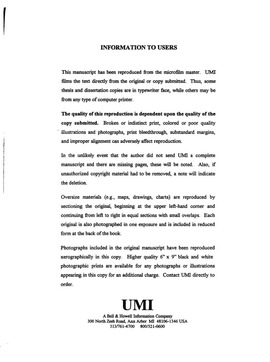| dc.contributor.advisor | Lamb, Peter, | en_US |
| dc.contributor.author | Liu, Qingfu. | en_US |
| dc.date.accessioned | 2013-08-16T12:29:54Z | |
| dc.date.available | 2013-08-16T12:29:54Z | |
| dc.date.issued | 1997 | en_US |
| dc.identifier.uri | https://hdl.handle.net/11244/5567 | |
| dc.description.abstract | In order to study the cloud processing of aerosols, a two-parameter drop spectrum that depends on both the drop mass and the solute mass has been introduced into the CIMMS LES model. The aerosol processing due to condensation, cloud droplet collision-coalescence and drizzle fallout have been studied through model simulation. The results show that continental (polluted) air can be modified to marine air within approximately 2 days through reduction of the aerosol number concentration. Coalescence is responsible for nearly all of the cloud condensation nuclei (CCN) number reduction. (Abstract shortened by UMI.) | en_US |
| dc.description.abstract | Using the CIMMS LES model with the VO method for condensation calculation, the aerosol effects on cloud microphysics and cloud radiative properties through the simulation of ship track formation have been studied. The CIMMS LES model has been run using both bulk and explicit microphysics to study ship track formation under various boundary layer conditions. Using a bulk thermodynamic formulation, I contrast the rates of effluent transport through a well-mixed boundary layer and through a decoupled layer. I also simulate the effects of heat injected by the ship engine exhaust on the transport of ship effluents into the cloud layer, finding a significant effect. Using an explicit microphysical model, I carry out simulations in clean and relatively polluted air. I find that a ship track forms easily in a well-mixed convective boundary layer in an environment with low cloud condensation nuclei, but its formation may be suppressed by the stable transition layer in the decoupled case. I also find that a ship track survives longer in a clean boundary layer than in a polluted environment. | en_US |
| dc.description.abstract | This dissertation is primarily focused on the study of aerosol-cloud interactions. First, the CIMMS Large Eddy Simulation (LES) model is used to study the effects of aerosol on cloud microstructure and cloud radiative properties by modeling the ship track effects. Second, a new enhanced version of the CIMMS explicit microphysical model is developed. The model allows us to track aerosol particles during their interactions with cloud and is used to simulate cloud processing of aerosols. An important part of the research was the development of a new variational optimization (VO) method which significantly limits the artificial broadening of cloud drop spectrum in the condensation calculations. The method requires specification of only one variable in each bin size for condensation and evaporation calculations in an Eulerian drop-size framework. The results show that the variational method not only conserves the integral parameters of the spectrum, such as drop number, mean radius, liquid water content and the effective radius, but also provides very accurate calculation of the spectrum itself. | en_US |
| dc.format.extent | xiii, 135 leaves : | en_US |
| dc.subject | Physics, Atmospheric Science. | en_US |
| dc.subject | Aerosols. | en_US |
| dc.subject | Cumulus. | en_US |
| dc.subject | Cloud physics. | en_US |
| dc.title | Modeling of the aerosol-cloud interactions in marine stratocumulus. | en_US |
| dc.type | Thesis | en_US |
| dc.thesis.degree | Ph.D. | en_US |
| dc.thesis.degreeDiscipline | School of Meteorology | en_US |
| dc.note | Source: Dissertation Abstracts International, Volume: 58-10, Section: B, page: 5444. | en_US |
| dc.note | Adviser: Peter Lamb. | en_US |
| ou.identifier | (UMI)AAI9812256 | en_US |
| ou.group | College of Atmospheric & Geographic Sciences::School of Meteorology | |
